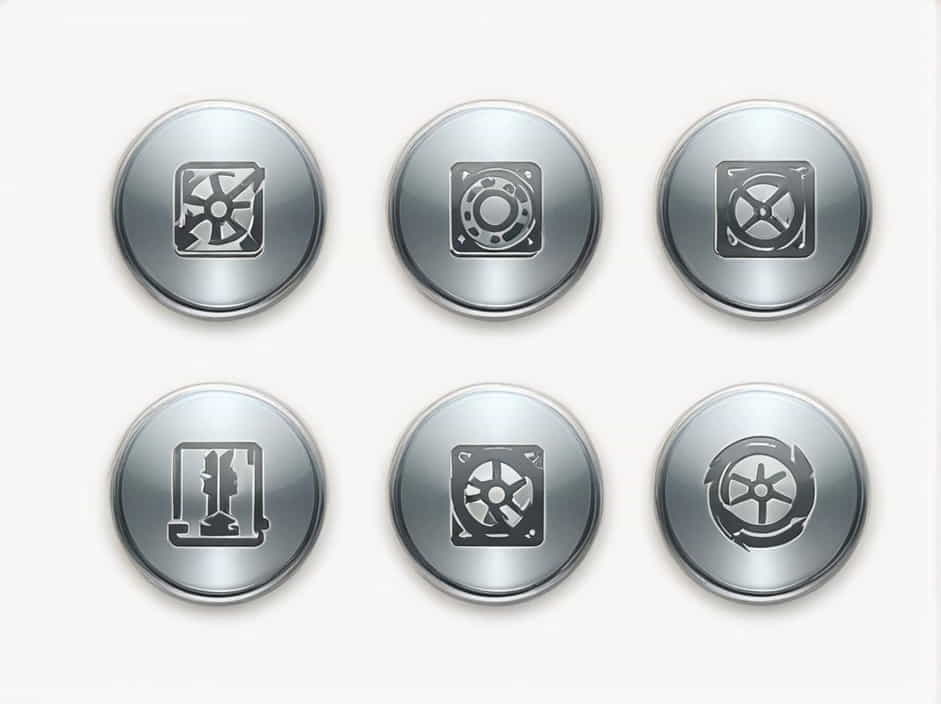Galvanization is a widely used process in the metal industry to protect iron and steel from rust and corrosion. This method involves coating metal surfaces with a protective layer of zinc to prevent oxidation and deterioration caused by exposure to moisture and air.
Zinc is the primary metal used in galvanization due to its excellent anti-corrosion properties. This topic explores why zinc is used in galvanization, how the process works, and its benefits in different industries.
Why Zinc Is Used in Galvanization?
1. Corrosion Resistance
Zinc forms a protective barrier that shields the underlying metal from moisture, oxygen, and corrosive substances. Unlike iron or steel, which rust when exposed to water and air, zinc develops a thin, impermeable oxide layer that prevents further corrosion.
2. Sacrificial Protection
One of the most significant advantages of zinc is its ability to provide cathodic protection. Even if the zinc coating gets scratched or damaged, it continues to protect the underlying metal by acting as a sacrificial anode. This means that zinc corrodes instead of the iron or steel beneath it, extending the lifespan of the metal structure.
3. Long-Lasting Durability
Galvanized coatings can last for decades without requiring maintenance. This makes zinc a cost-effective and reliable choice for protecting metal structures exposed to harsh environments.
4. Self-Healing Properties
Zinc has a unique ability to heal minor scratches through the formation of zinc carbonate and zinc hydroxide layers, which prevent rust from spreading to uncoated areas.
Types of Galvanization Methods
There are several methods used to apply zinc coatings to metals. Each method has specific advantages depending on the application.
1. Hot-Dip Galvanization
Hot-dip galvanization is the most common and effective method. It involves dipping steel or iron into molten zinc at high temperatures (around 450°C or 850°F).
Process:
-
The metal is cleaned to remove rust and grease.
-
It is dipped into a molten zinc bath.
-
A reaction occurs, forming zinc-iron alloy layers that bond to the surface.
-
The metal is cooled, and a final shiny zinc layer protects it.
Applications:
-
Construction materials (beams, pipes, and roofing sheets)
-
Automotive parts
-
Outdoor structures (bridges, fences, and poles)
2. Electro-Galvanization
This process involves electroplating zinc onto steel using an electric current. It creates a thin and uniform zinc layer, making it ideal for precision applications.
Process:
-
The metal is placed in a zinc electrolyte solution.
-
An electric current is applied to transfer zinc ions onto the surface.
-
A smooth, bright, and thin zinc coating forms.
Applications:
-
Car bodies and electronic components
-
Home appliances (washing machines, refrigerators)
-
Screws, nuts, and bolts
3. Sherardizing (Thermal Diffusion Galvanization)
Sherardizing is a dry galvanization process where steel parts are placed in a zinc powder chamber and heated to about 320°C (608°F). Zinc vapors bond with the metal surface, forming a strong protective layer.
Applications:
-
Small metal parts (fasteners, nails, chains)
-
Aerospace and military equipment
4. Mechanical Galvanization
This method involves tumbling metal parts with zinc powder, glass beads, and special chemicals. The impact bonds zinc to the surface without using electricity or molten zinc.
Applications:
-
Small hardware components
-
Industrial fasteners and tools
Advantages of Zinc Galvanization
Zinc-coated metals offer numerous benefits that make them essential in various industries.
1. Superior Corrosion Protection
Galvanized steel lasts 50+ years in rural areas and 20-25 years in coastal or industrial environments due to its ability to withstand moisture and pollution.
2. Cost-Effective Solution
Compared to stainless steel or aluminum, zinc galvanization provides a high level of protection at a lower cost.
3. Low Maintenance
Once applied, zinc coatings require little to no maintenance, reducing long-term expenses on repairs or replacements.
4. Eco-Friendly Option
Zinc is a naturally occurring element that can be recycled, making it an environmentally sustainable choice.
Industries That Rely on Galvanized Metals
Several industries benefit from zinc-coated metals due to their strength, durability, and rust resistance.
1. Construction and Infrastructure
Galvanized steel is used for:
-
Bridges and highways
-
Roofing materials
-
Structural beams and pipelines
2. Automotive Industry
Car manufacturers use galvanized steel for:
-
Body panels
-
Frames and chassis
-
Fuel tanks
3. Agriculture and Farming
Galvanized metals are ideal for:
-
Fencing and gates
-
Water tanks
-
Silos and barns
4. Electrical and Telecommunications
Galvanized materials protect:
-
Power transmission towers
-
Communication masts
-
Wiring and cable trays
Challenges of Zinc Galvanization
Despite its many benefits, galvanization has some limitations:
1. Limited Protection in Acidic Environments
Zinc coatings can be damaged by acidic solutions or chemicals, reducing their effectiveness.
2. High Initial Cost for Hot-Dip Galvanization
Although cost-effective in the long run, initial setup costs for hot-dip galvanization can be expensive.
3. Appearance Issues
Over time, galvanized coatings develop a dull gray patina, which may not be aesthetically appealing for certain applications.
Zinc is the most widely used metal in the galvanization method due to its corrosion resistance, sacrificial protection, and long-lasting durability. Various galvanization techniques, such as hot-dip galvanization, electro-galvanization, sherardizing, and mechanical galvanization, help industries protect metals from rust and extend their lifespan.
From construction and automotive industries to agriculture and telecommunications, zinc-coated metals play a crucial role in infrastructure and daily life. Despite some limitations, galvanization remains one of the most effective and economical methods to protect metal surfaces.
